I am getting ready for a presentation at the Leadership and Excellence in Accessible Design (LEAD) conference to be held at the Kennedy Center later this month. The presentation will ask and try to answer two big questions—what will the accessible museum of the future look like, and what do we have to do now to create it?
Usually, I approach forecasting by applying my imagination to the current trends and projecting them into the future to tell “what if” stories. This works pretty well with areas of operations in which I have been immersed (collections care, for example, or finance.) It’s harder with areas in which I have no “hands-on” experience, like accessible design. So, what does one do nowadays when one runs up against limits of knowledge or imagination? Crowdsource, of course!
That’s where you come in! Be my collaborators on the presentation, and contribute your experience, intuition and imagination. Here are a few of my thoughts about trends in relevant areas, offered mostly to fuel yours:
- Museums—I think we have made slow progress in the last couple of decades, impelled largely by the Americans with Disabilities Act. Most museums (even the smallest historic house) make at least a nod to accessible design. Some excel. But my impression is that the progress is mostly incremental and sadly insufficient. When I talk to people who need accommodation, I mostly hear frustration about the ragged edges of museums’ efforts. For example, a friend who uses a guide dog has stories of being hassled in museums, not because they didn’t have the right policies in place, but because not all the floor staff were well trained.
- Disability—the data I have reviewed suggests a slow increase in the number of Americans with disabilities, mostly tied to a population bulge as Baby Boomers reach their golden years. There are a few trends that might lead to increased rates of certain problems—the “obesity epidemic,” for example and the disorders that come with it, including impaired sight and mobility. But, this increase might be offset by trends in…
- Medicine—every futurist I have talked to says the most dramatic and least predictable developments in the coming decades will be in the field of biomedicine. If you believe the transhumanists, we are on the cusp of a transform the whole species, extending our lifespan (without attendant infirmities) and giving us the ability to replace/enhance all kinds of biomechanical and sensory failures. Transhumanists aside (and they are kind of the lunatic fringe of the futurist movement) just reading the weekly Science section of the New York Times provides a hint of coming advances, for example, implants that allow the user the control robotic limbs with brain impulses
- Technology (non-medical): we are also still on the fast curve of development of assistive technologies that may radically change the ability of museums to provide accessible experiences and the way in which visitors choose to experience the museum. As more of these technologies become cheap, portable, and tied to ubiquitous devices (like smartphones) the old “what font size should be used for accessible labels” may be left in the dust.
- Cultural—I think there is a growing expectation that disabilities of all kinds, physical, cognitive, developmental, psychological, be accommodated in public services and public facilities, whether or not it is mandated by legislation. We have a growing cadre of highly educated, politically savvy parents who aren’t shy about the needs of their children, and willing to rally the power of public opinion to assure equality of experience and opportunities. This may radically expand the scope of what a museum might have to take into account under the rubric of “accessible design.”
Ok, those are just a few thoughts to kindle the discussion. Help me out here folks— tell me what you see coming in the realm of accessible design.

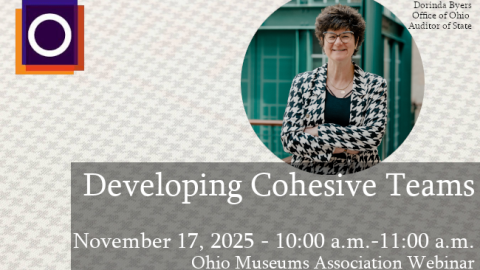
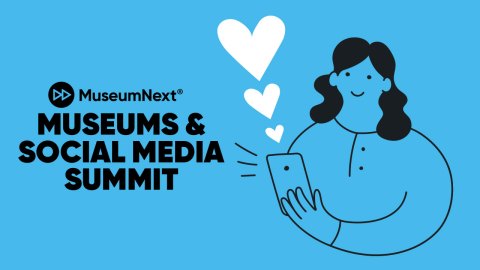

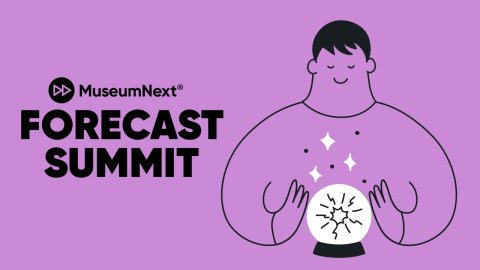


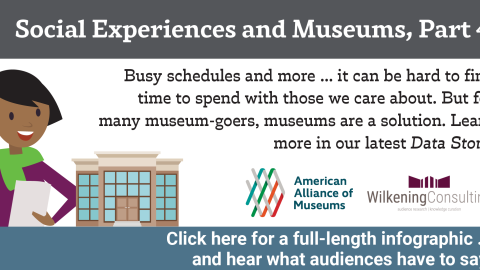
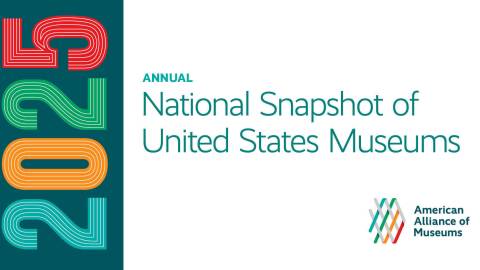
I agree with you that the scope, and degree, of accessibility needs will increase, even with the great strides in medicine.
So my main assumptions are:
1 – Museums will need to have technological capability to “feed” the devices those with disabilities use
2 – Museums will have to widen accessibility scope to developmental and/or cognitive disabilities
What do I mean?
Those who need accommodation for disabilities will increasingly be bringing their own devices to the museum with them. That is, they will not expect the museum to provide a gadget for . . . hearing loss, let’s say. Instead, they will bring their own that will 1- block out extraneous noise; 2 – allow them to select what audio components they wish to hear; and 3 – direct the sound into their ear, etc.
Now, taking this further, will there be future gadgets for, say, children with autism that allow them to block out peripheral noise and motion and better allow them to focus? Or what about other developmental disabilities? Museums have done much with physical disabilities, but what happens when parents of children with developmental disabilities expect equal treatment (and adults with the same disabilities, for that matter)? (Yes, some museums have done things like autism night, but they are not regular, or mainstream.)
And there will be an expectation that, if gadgets are brought to the museum, the museum will have the technological capacity to provide the necessary input into the gadget. (Though, on the flip side, I suspect the use of technology in museums will decrease dramatically in terms of hardware in the exhibit galleries, and increase in the use of whatever will come after iPhone applets, so those who choose technology in a museum-setting will expect it to be driven off of the gadget in their pocket anyway. I can envision some tech-savvy museums already at least thinking about iPhone applets that will provide label copy at much larger fonts, for example.)
I don’t have the numbers to hand, but research in accessibility (vs. disability) shows that the number of people who benefit from (or even need) accommodations are substantially higher than the number of people who self-report as disabled. This list might include people with diabetes with mobility or vision challenges, people with varying levels of arthritis, or even English as a second language for whom comprehension of exhibit text may be improved with clear, concise language. This is the language of universal design and there is plenty of literature out there on this perspective.
It was with this lens that I and some colleagues were challenged to approach a couple of National Park Service exhibit development projects. The bar was set quite high for equality of experience, so many of the traditional approaches were not what we were looking for – especially as we had plans for some computer-based exhibits. As I looked for solutions, I found that I was asking questions that the people I spoke to had not had asked of them. I didn’t feel as if I was pursuing novel ground in terms of accessibility, but clearly the field had not thought through the many opportunities for providing meaningful experiences for even the basic categories of visual, audio, and mobility impairment. To their credit, each and every person and company I worked with on the project embraced the challenge and were interested in making it work.
In brief (too late!), our approach was to have a dual channel receiver with headset. One channel was for visitors who wanted audio enhancement which allowed for volume control of media presentations and could transmit directly to the T-coils of hearing aids. The other channel was for people who wanted audio description of the exhibits. When the headset is picked up by the visitor, the appropriate channel was turned on. Throughout the exhibits, transponders were set that activated the headset when the person walks inside its region. So far, so normal.
For the computer interactives, the audio description specialist wrote descriptions for each of the screens and the computer interactive designers created high contrast screens with large activated areas keyed to the corners or sides of the screen so they could be found by touch. This included a station where personal stories were recorded. Doesn’t it all seem reasonable?
Anyway, the end result is that once a visitor had the appropriate headset, they could receive the same information someone who doesn’t need the assistance, engage in discovery learning, and leave behind their reflections for others.
So what’s the future???
The technology side of the story continues to make it possible to provide multiple delivery methods for content, allowing ones targeted to multiple audiences (not just the standard, ADA categories, but consider the common museum challenge of writing exhibit text that engages the child, satisfies the connoisseur, and doesn’t lose the first-time visitor.) It also continues to increase the ways that people can contribute to the exhibit (RSS feed of Twitter posts tagged #exhibit_name?).
The growth in social profiles may lead to standardization where you could apply your Facebook/Myspace/whatever the next big thing is profile to your visit – like an ‘OpenID login’ that carries relevant information to which the exhibit can then adapt the information it delivers as well as providing a venue for the visitor to respond (exhibit comments? Retweeting? Blogging on the spot?).
That’s it for today – helps?
Karen B
Future of Accessibility in Museums.
Based on aging population, combined with medical advances that permit people with disabilities to do more than they had in the past, Museums of the future are likely to have both a growing number and growing percentage of visitors with disabilities. The visitors are also likely to have to have multiple disabilities and a expanding diversity of disabilities. As the population extends life and seeks to improve the quality of their lives through museum visits, the relationship between a person with disabilities and an institution could be a much longer one than in the past. Also,
ADA has made it more and more socially acceptable for persons with permanent or temporary disabilities to get out in public more, including museum visits.
These trends have serious impacts and implications for museums to be responsive.
Museums of the future can improve the museum visit and build a relationship with a person through a loyalty ID program. The ID can be used to identify the visitor and customize electronic displays, languages, sounds, lighting, and maps for the individual visitor. The visitor can register their intention to visit in advance with cell phone, computer, etc. before the visit. The Museum can respond with messages suggesting directions, entrances, and parking for handicapped visitors. Assistive devices can be reserved and waiting when the visitor arrives. Custom maps, menus, and suggested programs and routes through the institution (based on past preferences or stated preferences) can also be delivered on arrival. Similarly, museum store gift shopping suggestions, or discount coupons can be presented on arrival. Exhibits and experiences can be pre-programmed so that when the visitor present the ID to the exhibit (through a kiosk, rfid, mag stripe, member number) the exhibit presents the personalized programming.
.
So here's a random thought:
Beth and Phil, as you know, we sometimes take museum professionals on tours of 'other worlds' view the world through other lenses. (For example, examining how America's top retailers 'curate' their brand experience via backstage tours of places like L.L. Bean, Apple Store, Starbucks, American Girl Place, Sephora, Barnes & Noble, etc.). What about something like that for universal design (sometimes known as barrier-free design)?
Last month, I was walking in Boston and accidentally stumbled across the Institute for Human Centered Design, a non-profit focused on universal design and adaptive environments, and it was a fascinating diversion. Would it be worth pulling together a tour for museum professionals that examines the world of universal design through other lenses?
Random examples pop to mind: Oxo Good Grips is doing rather well selling universal design in household tools. For any convening of museums in NYC, we'd be happy to try to make a tour happen.
Or here's a more futuristic example. One of the more interesting developments out of the Defense Department's Advance Research Projects Agency are self-driving cars. Reliable sources tell me that they are already fully functioning in some DoD test environment. And as you can guess, the automakers are all over it as they plan for the rapidly aging population.
Since the Japanese automakers are way ahead of the American automakers when it comes to universal design, perhaps there's a visit to the headquarters of American Honda or Toyota USA in store during the AAM's LA conference? Only 15 miles from the convention center, but LA driving is a pain, at least until I'm old and ride in a self-driving car.
Anyway, a really fun topic to explore. And it's pretty important. We spend a ton of time on this issue of the aging of America with many of our non-museum clients. It's already an issue when 1 in 8 Americans are currently over the age of 65. But within the span of my career, it's going to be 1 in 5 people over 65. That's a pretty radical shift, and it's literally around the corner.